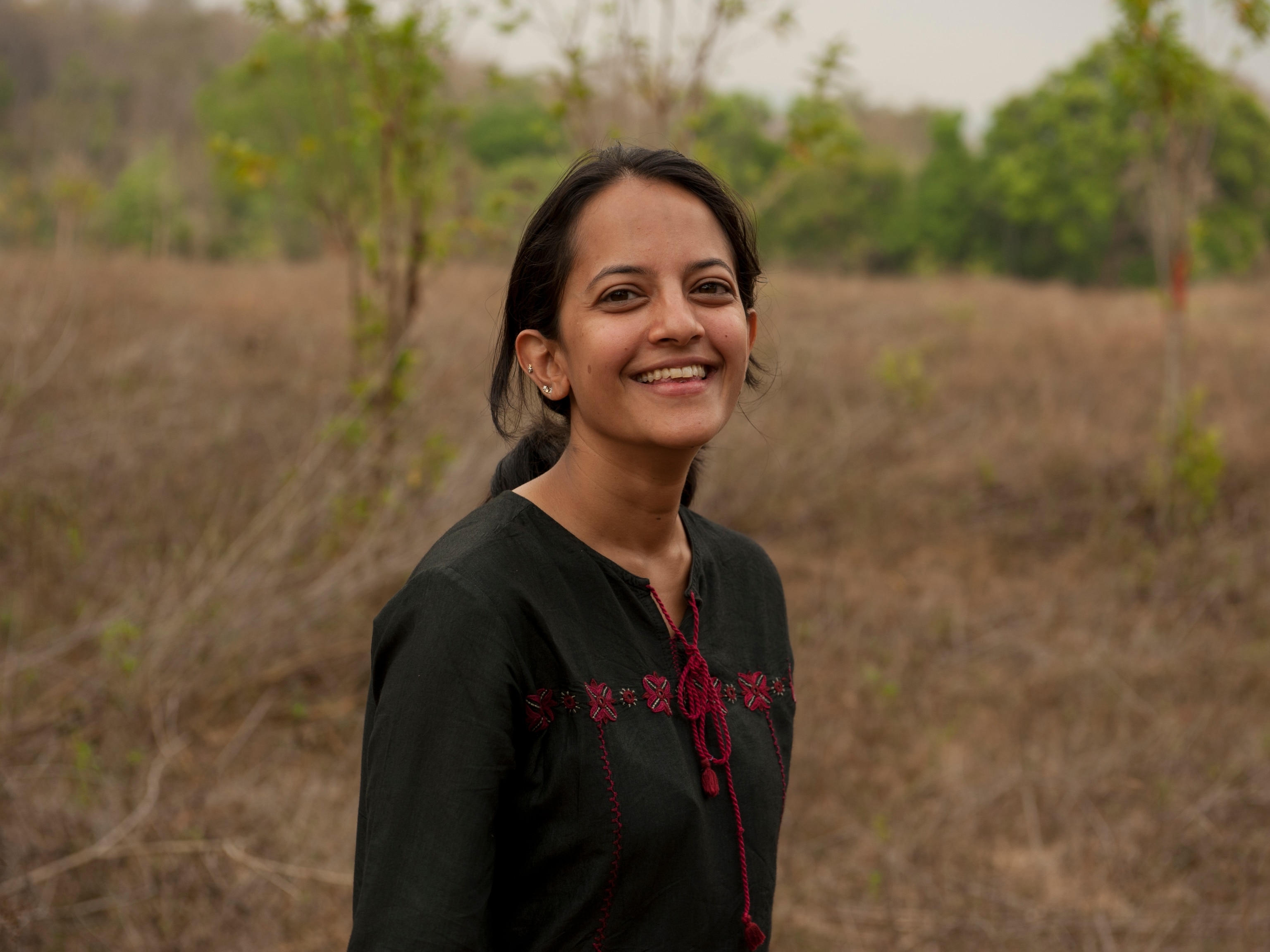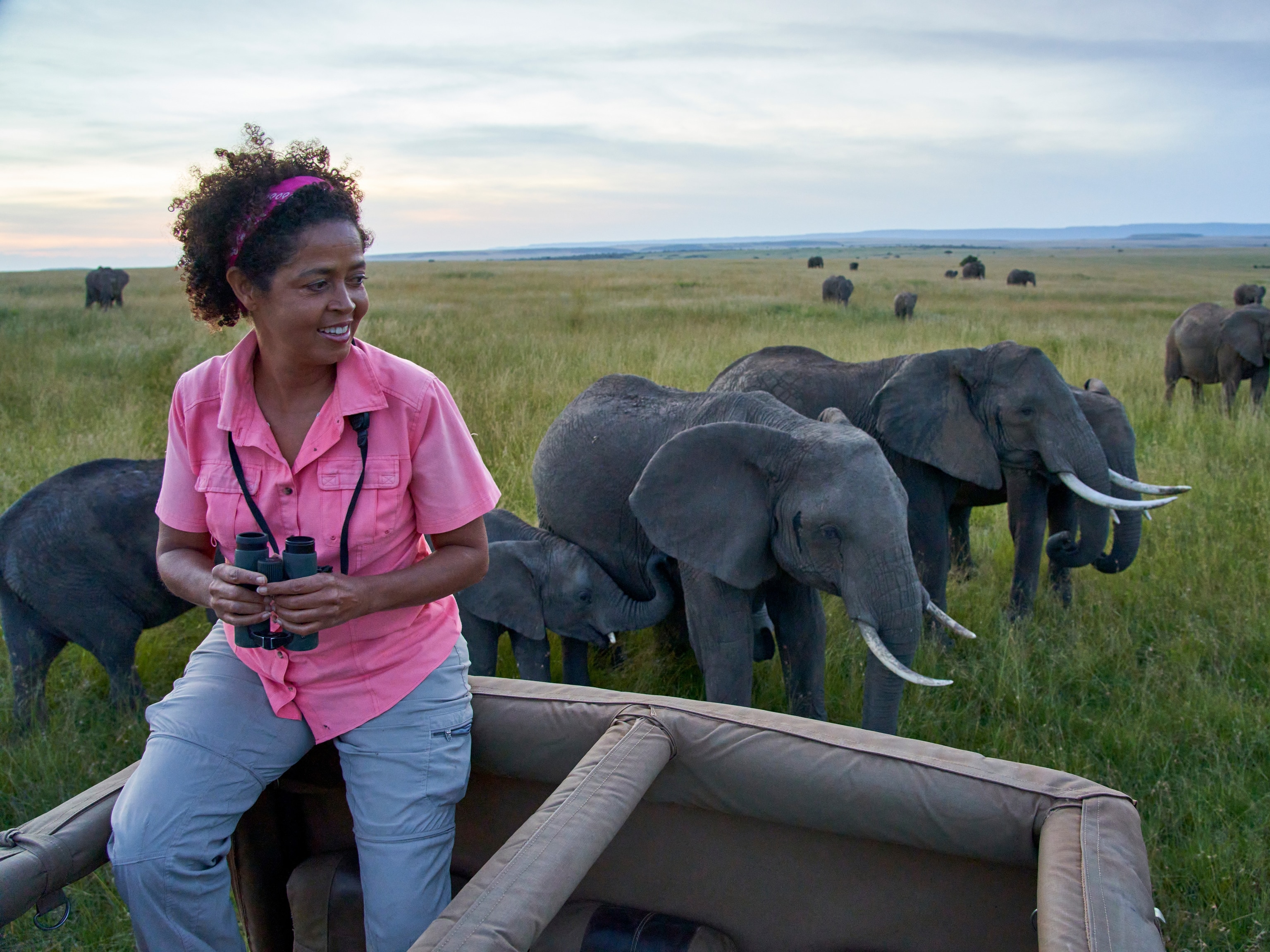Thalefang Charles’ storytelling is helping safeguard the Okavango Delta and Indigenous knowledge
The Botswana storyteller interviews local leaders and inspires rising filmmakers in one of the world’s most iconic wetlands
It’s a typical day in the field for National Geographic Explorer Thalefang Charles. The jerky car ride ceases when the loose dirt road traps his tires.
After a brief stint sweating and shoveling in the afternoon sun, his truck is free to continue on its path. Charles completes his drive to a small village in the Okavango Delta. Before he begins his work as a documentarian, he introduces himself to members of the community.
As a photographer, writer, and storyteller, Charles puts personal connections and trust at the forefront of his work. He memorializes the lives of the people living amidst one of the world’s largest wetlands in northwestern Botswana. With more than 16 years of experience as a journalist, who wields storytelling as a means of safeguarding the Okavango Delta, Charles still reflects on his journey with surprise.
“I think it’s still sinking in that I can identify myself as a [National Geographic] Explorer,” Charles laughs.
Though raised in Botswana, Charles hadn’t toured the Okavango Delta—home to over 1,000 species of plants, more than 480 species of birds, 130 species of mammals, and numerous species of reptiles and fish. However, after he traveled east to Mozambique, his interest in the Delta was piqued. There, he met a woman who was thrilled to share her love for Botswana and its Delta.
“I was a little bit ashamed,” Charles admits. “Here’s somebody that is from another country, and they love my country. And the first thing, the biggest thing that they love about my country is this place that I don’t know.”
With new intrigue, Charles took it upon himself to learn everything he could about the Okavango. The area sees tens of thousands of tourists each year, hoping to catch a glimpse of its wildlife, but Charles wanted to experience the place like a local. He put together a trip across the Okavango Delta using mekoro—dugout canoes. There, he learned of the villages and people who lived in the bush.
“I went in and then discovered that the Delta is not just about the wildlife or the beautiful camps. There are villages in there, there are people, there are lifestyles that are different from the side of the country where I come from,” he says, referring to Botswana’s southern region.
“Most of all the media and the whole country's leadership or policymakers are based in the South,” Charles says. “[They] don't know much about the stories from that side.”
Charles was adamant: he would document these stories to fill the gap.
“I traveled with elderly polers, and I remember then thinking that I need to write these stories, I need to record their amazing stories…” Charles says. “These men are living libraries.”
One evening, while huddled around a fire with a group of elders, Charles listened to the men talk about techniques they used to survive in the bush among the wildlife. Some recounted how they got certain scars or times they fought predators like lions. Charles was astounded and fascinated by their lives. The elders told Charles that their kids were all leaving home and traveling to cities for job opportunities, and Charles realized he was speaking to people whose traditions weren’t guaranteed to see the next generation.
Soon after, in 2015, he met fellow Explorer Steve Boyes leading an Expedition from Angola—where the waters of the Okavango originate—to the Delta’s alluvial fan in Botswana. This Expedition paved the way for the creation of the National Geographic Okavango Wilderness Project (NGOWP) and its partner organization, the Botswana Wild Bird Trust (BWBT).
The NGOWP’s mission is to create permanent, sustainable protection for the greater Okavango River Basin by combining the power of scientific and traditional knowledge, community education, and storytelling. Charles' passion for preserving the Delta manifested in forming connections with its residents. He believes local people—who have been taking care of the land, water, and wildlife since the beginning of time—must lead the Okavango's long-term protection. By engaging Indigenous peoples, the NGOWP and the BWBT can receive feedback on the region’s most pressing issues and better understand how to assist in protecting waterways, communities, and wildlife sustainably.
“You go back to your homes elsewhere. These are the people that still remain,” Charles says, adding that inhabitants of the Delta and surrounding area are familiar with the aspects of daily life in the region, including human-wildlife coexistence, and thus are in the best position to implement solutions.
Charles received his first National Geographic grant in 2022 for his work chronicling the stories of Indigenous communities across the Delta through audio recording and photography. He intends to publish the collection of stories as a book, which is especially personal to Charles.
“I was raised by my grandparents, and I grew up next to a library. So, it's almost like that full circle when you hear all these great stories from Grandpa and put them in a book,” Charles says.
It's also an important part of the bigger picture of conservation and achieving more protection in the region. More than one million people who reside in the Basin, spanning Angola, Namibia, and Botswana, depend on this ecosystem for water and food security. But the effects of climate change, deforestation, water diversion, and other threats are putting the source waters at risk.
Right now, the Okavango Delta has formal protection, but its source in Angola—comprised of rivers and lakes that feed the Delta—does not.
While Charles concedes that it may not be achievable in his lifetime, he is dedicated and resolute in the mission: “We need to start somewhere.”
Today, Charles also serves as Storytelling Manager of NGOWP and, recently, as a producer for Nkashi: Race for the Okavango, a film created by the Society’s Impact Story Lab in collaboration with Batswana filmmakers. The documentary follows mekoro polers preparing for the Nkashi Classic, a waterways race to determine the fastest poler in the Delta. The film was made in Botswana, in the Setswana language, and celebrates the people of the Delta. Several Batswana held key roles, including cinematographer, producer, sound recordist, and drone pilot.
However, Charles said he had to work at building a Batswana crew.
“I realized that we need more of the local storytellers here… I wanted to bring a team of a lot of young filmmakers, some from the city, for instance,” Charles explains. “The local crew that did Nkashi are the guys that I found filming weddings, and now they love the Delta, and they want work in the Delta.”
They also want more involvement in the film industry in general, and for this, Charles explains, there needs to be more exposure to the art and more Batswana behind the cameras.
“If you want to have more of the filmmakers, they need to see more films…They need to see people that look like them taking pictures for a living…” Charles says. “Then they can actually aspire to be like that.”
Nkashi: Race for the Okavango originally premiered in Maun, Botswana, home to the BWBT’s Nkashi Knowledge Center, where Charles works. After the premiere, to ensure the film would be accessible to the residents of the Delta, the crew screened Nkashi in 13 different villages. Charles also asked wildlife filmmakers he knew to contribute their films for the roadshow. He remembers seeing people’s faces light up, learning and gaining interest in the wildlife, and experiencing the joy of the Nkashi film.
In his quest to make photography and videography more accessible for people in the Okavango, Charles works as an instructor for National Geographic’s Photo Camp, which hosted a program in Botswana last year. He helped introduce children to camera work and resources to keep up their skills.
At the Nkashi Knowledge Center, Charles launched a Wildlife Storytelling Club for youth, including students who participated in the Photo Camp program in Maun. He procured 10 cameras that the kids use to document stories based on environmental topics assigned to them. They meet regularly to continue their education and discuss their photos with Charles.
Looking forward, he envisions establishing a production house operating out of Maun that would offer gear rentals and mentorship to local storytellers. As for personal projects, Charles hopes to create a natural history documentary from the perspective of Batswana and publish more books with the aim of inspiring the world to fall in love with the Okavango Delta, just as he did.
“I love what I'm doing,” Charles says. “Some of it, I don't almost see it as work… this is just passion.”
ABOUT THE WRITER
Abby Wallace is the 2023 Content and Editorial Intern for the Society. She believes in the power of storytelling as a means of accessible, inclusive education.


_4x3.jpg)
